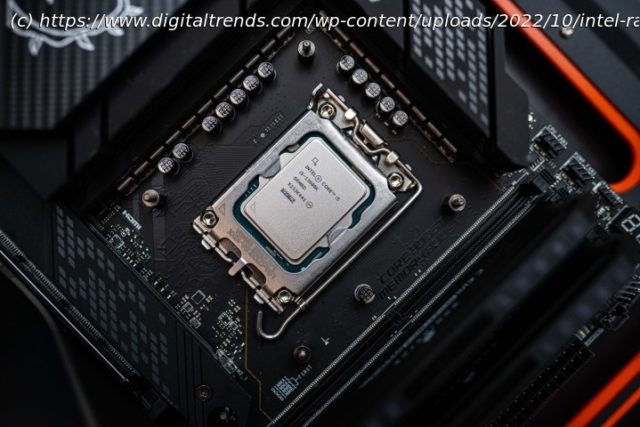Your CPU is at the center of your computer, handling the underlying math that makes your machine tick. In this guide, we show you how to choose a CPU.
Searching for a new CPU in 2024 presents you with excellent options for powerful processors, budget chips that punch well above their weight, and some incredibly efficient options that are perfect for small builds. That’s what makes the modern CPU landscape so exciting: You don’t just need to buy the best processor you can afford.
The right CPU for you is one that can do everything you need right now, and do it well, while also providing some future-proofing, and ideally, a clear upgrade path for the future. Here’s how to buy a CPU in 2024.CPU specs, explained
Aside from the manufacturer, the main point of consideration when you buy a CPU is going to be the specifications of the processor. This means cores, threads, clock speeds, and cache.
As with many things in the world of computing, the general rule of thumb is “the more, the better,” but that doesn’t mean you need to spend money on a high-end CPU if all you’re doing is some light gaming. You don’t need one of the best CPUs for gaming, if you’re looking to use your PC exclusively for work.
If you want to gain an understanding of the way processors work, we’ll tell you everything you need to know below. However, if you’d rather just get down to business and hear about the different options that are available to you, you can skip forward to the next section that discusses the differences between AMD and Intel.Cores and threads
Cores are like individual processors of their own, all packed together on the same chip. Traditionally, they can perform one task each at a time, meaning that more cores make a processor better at multitasking. Modern software is far better at taking advantage of more cores at once to do the same job, so more cores can make some software run faster, too.
Threads are the number of tasks that a CPU can conduct at any one time. Many modern processors feature simultaneous multithreading (called hyperthreading on Intel CPUs), which lets processors leverage spare core performance for additional tasks. That’s why you’ll often see a CPU listed with eight cores and 16 threads or 12 cores and 24 threads. These additional threads aren’t as fast as the cores themselves — as they are effectively leveraging parts of the CPU that are underused — but they do typically improve performance by a noticeable margin.
Some software can leverage more cores and threads than others, making the number of cores and threads that your CPU has a big indicator of potential performance. Having more cores than you need doesn’t speed things up beyond the limits of what the software can handle, and it can lead to your individual cores not being as fast as those in chips with smaller numbers.Clocks and IPC
Another major consideration with CPUs is clock speed. This is the megahertz (MHz) and gigahertz (GHz) rating and represents how many collections of tasks a processor can perform each second. It’s a fair representation of the speed of individual cores, though it doesn’t tell the whole story. If two processors from the same generation have the same number of cores, but one has a higher clock speed, it will perform faster.
Since higher clock speeds mean individual cores run faster, that can make chips with higher clock speeds but fewer cores perform better in certain applications that can’t make use of higher core and thread counts.
CPUs also have different instructions per clock (IPC) ratings. That’s the number of tasks it can perform in each clock cycle (each second, noted by the clock speed), and it’s dependent on the underlying architecture.
While this might seem a little confusing, it highlights the importance of looking at individual reviews for processors. Head-to-heads, where two CPUs are pitted against each other in comparable tests, are also a great way to see how they perform in the real world. We have a few such comparisons, such as a real battle of the Titans that compares the Ryzen 9 7950X to the Intel Core i9-13900K.
If you want a good rule of thumb, CPUs with higher clock speeds and newer architectures are faster at just about everything, but for productivity tasks, a modern one with more cores will usually be quicker.CPU cache
The CPU cache is yet another spec that’s worth looking at. The cache is a small amount of very fast memory that is built directly onto the processor, and it’s responsible for storing information that the CPU needs to frequently go back to. Embedding the cache onto the chip means that the information is retrieved quicker than if your computer had to fetch it from the system’s main RAM.
The two types of cache that matter when you shop are the L2 and the L3, and CPUs typically have larger L3 caches than L2. Typically, each CPU core has its own allotment of L2 cache, but the L3 cache is shared among all cores.
You won’t be surprised to hear that the more cache your CPU has, the better. Although you don’t need massive amounts of it for day-to-day uses, it can have a dramatic impact on gaming, which is the why AMD’s 3D V-Cache CPUs, like the 7800X3D and 7950X3D are some of the best for gaming.Intel or AMD?
Now that we’ve covered what all those different terms mean, let’s see how Team Red (AMD) and Team Blue (Intel) utilize them to deliver powerful processors.
If you’re buying a processor, you essentially have two choices — Intel and AMD. Apple also has its own processor type, called the M chip, but those are not standalone CPUs that you can put inside your PC. Instead, you’ll find them in various Macs and MacBooks. As they’re irrelevant to this article, we’ll focus on Intel and AMD instead.
Intel and AMD have a longstanding rivalry, and though both have had their downturns, in 2024 these two chip companies are hotly competitive with one another, making either a solid choice for almost anyone.
There are several differences between AMD and Intel. Each manufacturer equips its processors with different capabilities, but they have a lot of similarities in the way they work. However, certain design choices still set them apart, and the pricing is another factor.
Let’s take a deep dive into Intel and AMD.Intel
Intel has been around for years and years, and it can usually be relied on to release new CPUs one a year. The last couple of years saw the rise of the Intel Alder Lake, followed by Intel Raptor Lake in 2022 and its 14th generation refresh in 2023. The next generations are already looming on the horizon, including Intel Arrow Lake.
Intel makes CPUs both for desktops and for laptops. Some of Intel’s processors come with integrated graphics and others don’t, meaning you’ll also need to buy a discrete GPU to match. Moreover, you can overclock some Intel chips, meaning that their clock speed can be adjusted higher at the cost of increased power consumption — but this option isn’t available on every CPU.
Where some AMD chips go all-in on the clock speed and the cache size, Intel has been stacking up on cores. Comparing AMD and Intel may sometimes reveal that Intel has an edge in productivity-related tasks thanks to those higher core counts.
Intel’s top CPU, the Core i9-14900KS, comes with 24 cores. It’s a massive, power-hungry beast, though, so most users don’t need to consider it for their builds. However, even midrange CPUs like the Core i5-13600K come with 14 cores and offer excellent value for money.
Since the release of Intel Alder Lake (12th Gen), Intel has been using a hybrid core structure in its processors. This means that instead of using a single core type, it splits cores into performance (P) cores and efficiency (E) cores. The CPU will often have more efficiency cores than performance cores.
P-cores are designed to handle heavy-duty tasks, while E-cores are left to handle background tasks that don’t require the full power of your processor.






